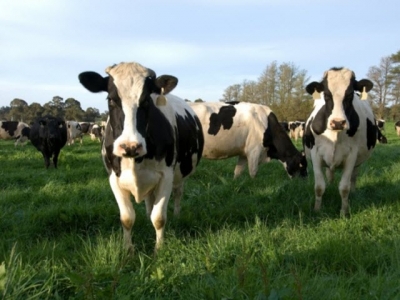Formulating diets for individual cow needs more suited to smaller scale operations

With increasing competition and shrinking margins, producers need maximum efficiency on their dairies. Precision nutrition is said to help save labor costs and improve animal performance.
“Meeting nutritional requirements makes sense. Not over-feeding results in reduced feed costs and less emission to the environment,” Alexander Hristov, professor of dairy nutrition at Penn State University told FeedNavigator.
Precision nutrition can take one of two forms – either seeking to meet the needs of cows through the creation of a tailored feed for a herd or making a feed that has been formulated for the requirements of each individual cow, he said.
Implementation considerations
However, implementing either version of precision feeding brings its own challenges, said Hristov.
Creating a feed for a group of cattle can still leave some over or underfed, while the individual cow focused system involves the balancing of many factors including economics.
While there may be cost savings in feed and labor with the individual cow precision feeding approach the initial outlay could still be high, continued Hristov.
“If we are talking about feeding cows individually, then you need to invest in the technology (it is available from several companies),” he said. “Then, the producers have to be convinced that this is the right thing to do for the environment and society.”
Additionally, many of the technologies involved are new and producers may not have much experience working with them, he said.
“This [individual cow] approach’ has mostly been used with relatively smaller herd sizes,” he said. “I think it can be scaled up for larger farms, but I have not seen much of it. It would be correct to state that these technologies may give smaller farms (<500 cows) some advantages since they cannot fully benefit from economies of scale.”
With the more traditional style of precision feeding, establishing a total mixed ration (TMR) for a herd and controlling intake, the economic benefit to producers can be a 15% to 20% reduction in feed costs, said Jud Heinrichs, professor of dairy science at the same institution.
Precision feeding aimed at the group also involves the need for equipment like a TMR mixer and scales, he added. And producers need certain data including body weights of the animals involved, said Heinrichs.
In the group feeding system, diets would need to be reexamined every time the ingredients change, he continued.
For a more individual system, this could mean a continual update based on the automated delivery of concentrated feed. And it can be beneficial to formulate more than one diet for lactating cows, said Hirstov.
Related news
 Lice in cattle herds can bite producer profits
Lice in cattle herds can bite producer profits Cattle producers should be mindful of a common pest lice in their herd. Longer winter coats on cattle provide ideal conditions for populations to grow
 More understanding needed on feed ingredient, rumen interaction
More understanding needed on feed ingredient, rumen interaction Feed ingredient combinations and management practices remain areas for development and research in the US dairy industry, says long-time dairy nutritionist
 Bacillus-based feed additive may improve dairy milk efficiency, boost health
Bacillus-based feed additive may improve dairy milk efficiency, boost health The use of Bacillus pumilus in dairy cattle feed may improve milk production efficiency and improve health during transition.